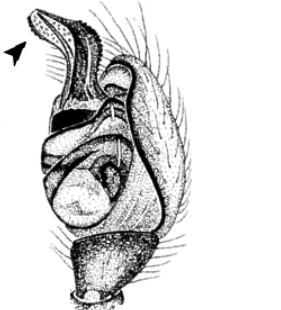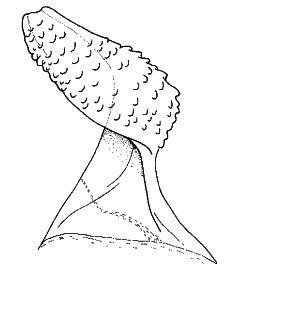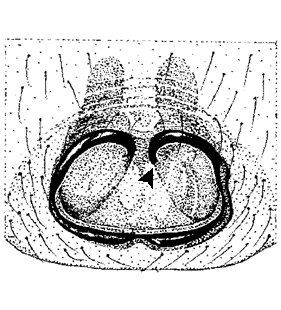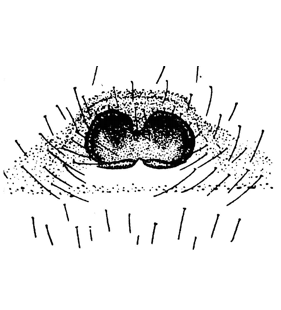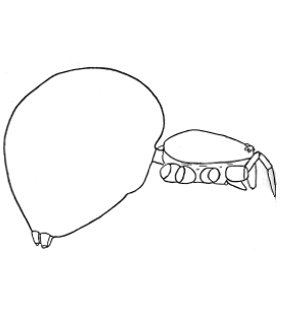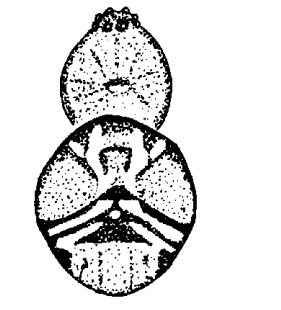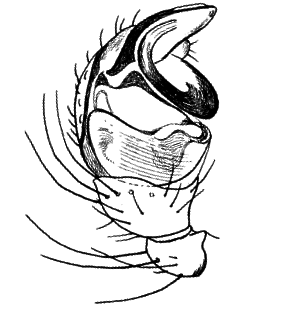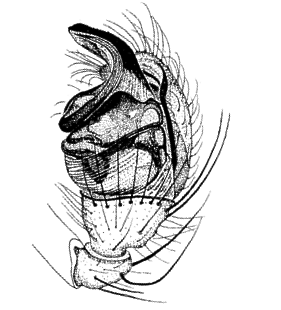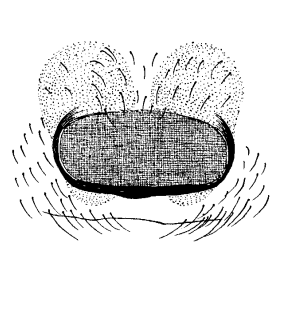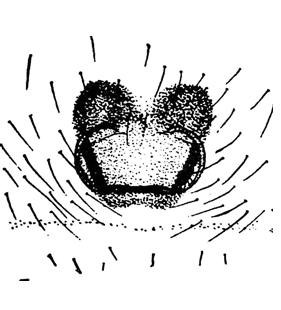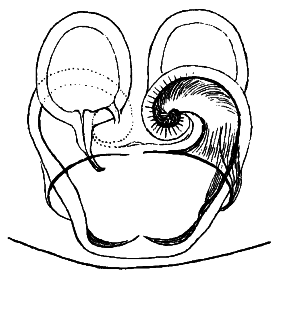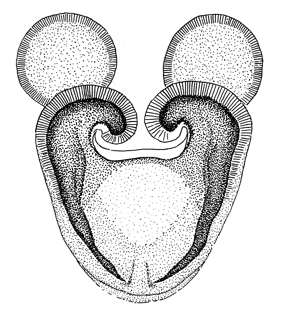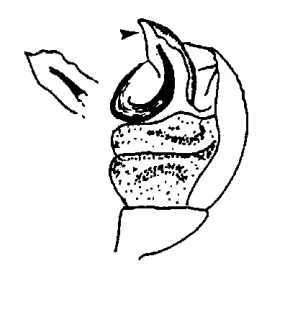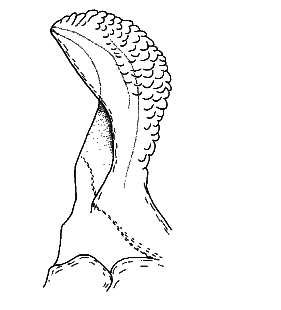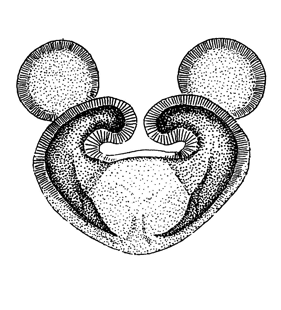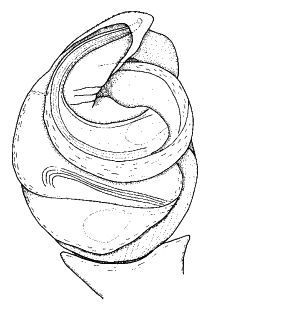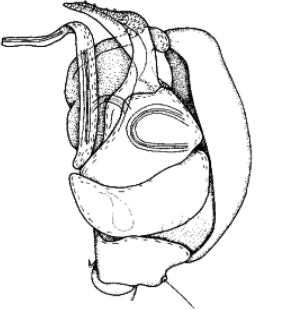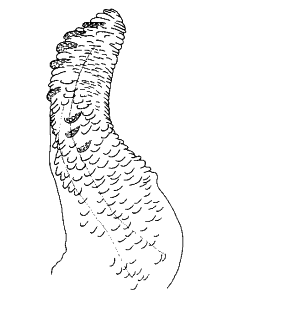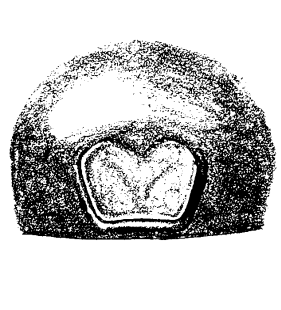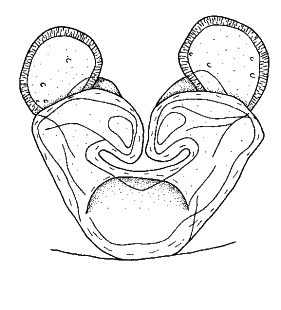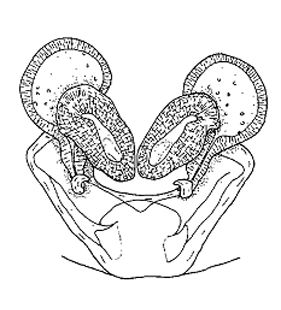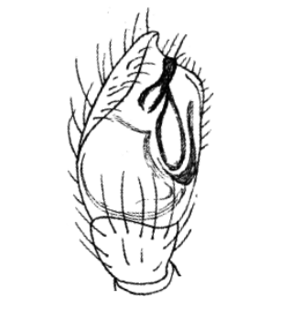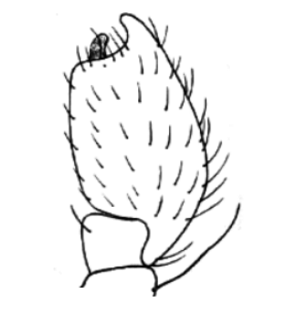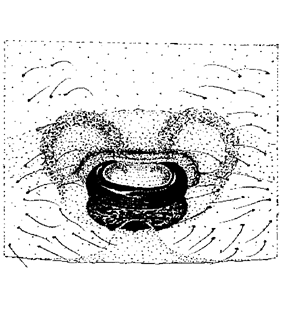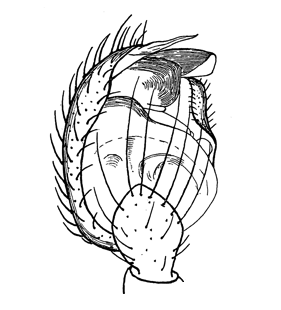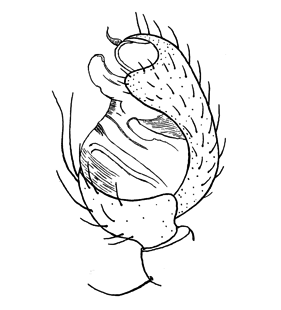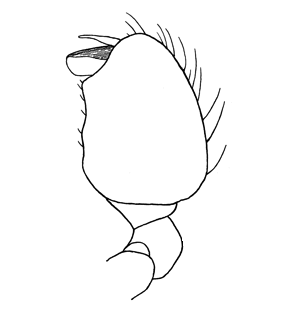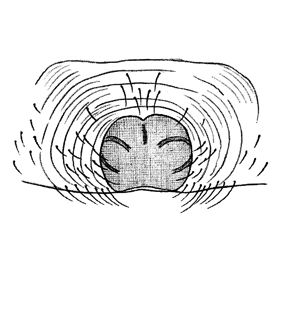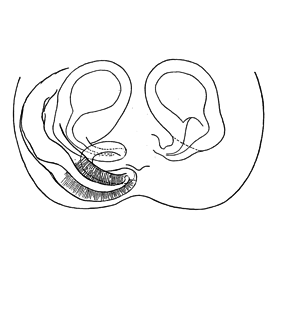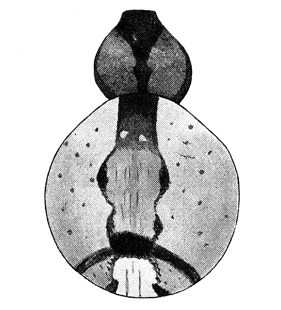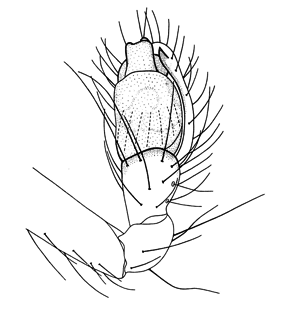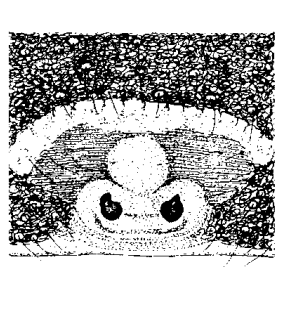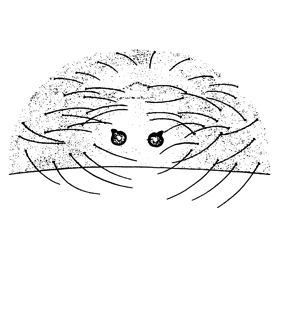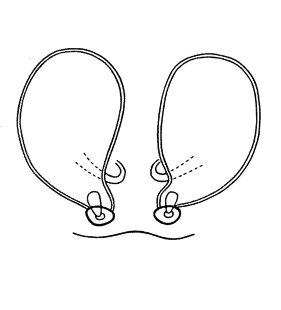Theridiidae: Parasteatoda Archer, 1946
|
In case you find an error or have a specific suggestion, please follow this link: click
|
|||||||||||
| 1 |
Male pedipalp with large spoon-shaped conductor; epigyne is a large transverse oval groove | ||||||||||
| - | Conductor of male pedipalp only little overtopping cymbium; epigyne different | ||||||||||
| 2 (1) |
Conductor slightly twisted around its longitudinal axis; border of epigynal groove distinct, anterior margin with small tip pointing toward posterior end; entrance ducts rectangularly bent Parasteatoda lunata (Clerck, 1757) |
||||||||||
| - | Conductor not twisted around its longitudinal axis; border of epigynal groove indistinct at anterior margin | ||||||||||
| 3 (2) |
Entrance ducts forming a heart-shaped figure which is longer than wide; epigyne and male pedipalp as fig. Parasteatoda tepidariorum (C. L. Koch, 1841) |
||||||||||
| - | Different | ||||||||||
| - | Figure formed by entrance ducts approx. as long as wide; male pedipalp as fig. very similar to tepidariorum mostly a nit smaller and with distinct opisthosomal pattern Parasteatoda simulans (Thorell, 1875) |
| |||||||||
| - | Pedipalp, conductor, vulva and habitus as fig. Parasteatoda tabulata (Levi, 1980) |
||||||||||
| 4 (1) |
Conductor of male pedipalp bluntly rounded distally; epigyne posteriorly bordered by a chitinous bulge Cryptachaea riparia (Blackwall, 1834) |
||||||||||
| - | Different | ||||||||||
| 5 (4) |
Conductor of male pedipalp as fig.; epigynal groove as wide as long Ohlertidion ohlerti (Thorell, 1870) |
| |||||||||
| - | Conductor transversely truncated distally; epigyne as fig. Cryptachaea veruculata (Urquhart, 1886) |
|


